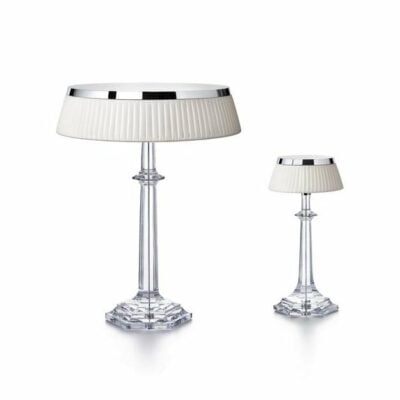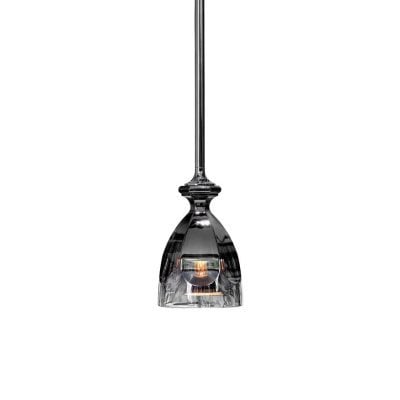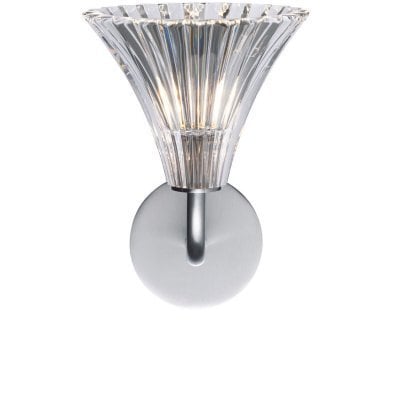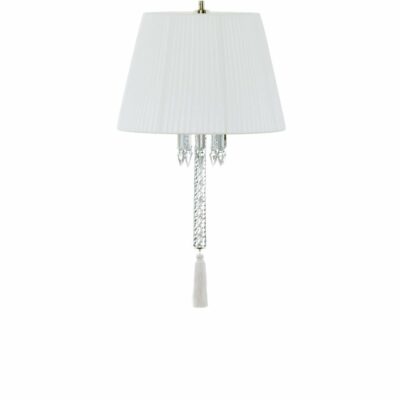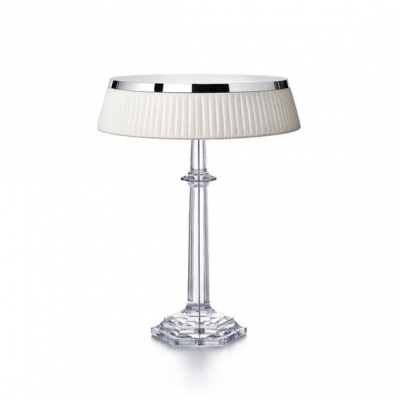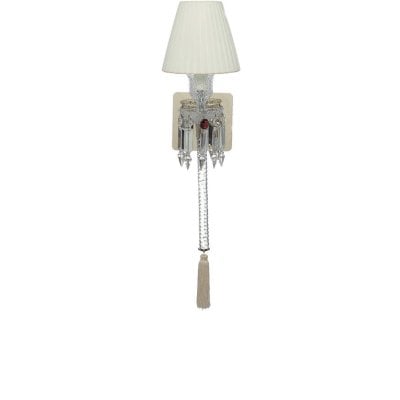Lighting
During the national Exhibition of the products of the French industry of 1827, Baccarat is the first French crystal glass-making to present elements of lighting trade, like pendants in the shape of stings and chains of symbolic octagons as well as pearls, rosettes, palmettes, lily flowers, bells and pears, intended to decorate the bronze chandeliers.
Showing 1–12 of 39 results
-
11x15xcm
-
56xx19cm
-
60xx19cm
-
42xxcm
-
x40x40cm
-
64xx35cm
-
64xx35cm
-
29xx14cm
BACCARAT CRYSTAL LIGHTING – LAMPS, CHANDELIERS :
Discover our Baccarat lightings, Baccarat lamps, Baccarat chandeliers online. During the national Exhibition of the products of the French industry of 1827, Baccarat is the first French crystal glass-making to present elements of lighting trade, like pendants in the shape of stings and chains of symbolic octagons as well as pearls, rosettes, palmettes, lily flowers, bells and pears, intended to decorate the bronze chandeliers, to reflect the light of candles and to give to the cut crystal the full measure of its brightness. It was no easy feat to dazzle, in their own stronghold, the artists and craftsmen of the Nancy School, which was at the forefront of the plant-inspired Art Nouveau easthetic.
♦ LAMPS, CHANDELIERS, WALL SCONCES, PENDANT LIGHTINGS :
However, at the East of France international Exhibition that opened in Nancy on 1 May 1909, Baccarat succeeded brilliantly in doing just that –despite stiff competition from the Saint Louis crystal works, the Meisenthal and Goetzbruck glassworks in moselle, as well as the Vosges and Daum glassworks. Visitors to the Baccarat stand marvelled at the « grandiose accumulation of crystals » and although it was not participating in the competition, since its director, Mr Michaut, was chairing the jury, several of Baccarat’s craftsmen received individual distinctions. These genuine magicians of glass were capable of blowing stemware such as the so-called « Tsar service » made entirely in coloured-overlay clear crystal and decorated with spectacular diamond points and palmettes. The same glass blowers also excelled in creating the so-called « Negus » vase, a monumental vase gilded with bronze whose magnificence charmed Menelik II, the Negus of Abyssinia. Also admired were Baccarat’s neoclassical beaties such as the Medicis, an imposing vase weighing 80 kilos or the « fish-tail » vase on which the graces dance in a circle. Not to mention the indispendable Art Nouveau repertoire, which, on the vases designed by Emile Gallé as well as those of Baccarat lilies, featured water lilies, poppies and other exotic plants. (revue générale de l’exposition de Nancy)


